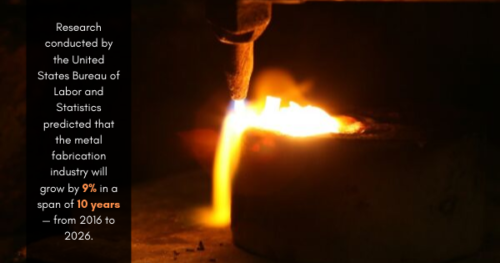3 Most Considered Characteristics Of Metals In The Aerospace And Medical Industries
If you were to say that the discovery of metal is the greatest thing that has ever happened to man, then chances are, you will be right. From transport, communication, health and even in your home or workplace, different metals define your day to day activities. 
The world offers you an endless supply of metals which appear in their natural forms such as iron, copper, and silver. However, there is another category of metals known as combined metals. Combined metals play a significant role in the manufacturing of sophisticated items that significantly help humans realize a whole new world of technological advancements.
What are combined metals? These are alloys of two or more naturally occurring metals.
Alloying is done to improve the quality or achieve specific attributes of the metals. These qualities include electrical conductivity, heat resistance, strength, resistance from corrosion by other elements, durability, and other essential attributes. An excellent example of such metals is stainless steel which has several subtypes/specifications such as the ams5510, which is heat and corrosion-resistant.
A research conducted by the U.S. Bureau of Labor and Statistics predicted that the metal fabrication industry will grow by 9% in a span of 10 years — from 2016 to 2026. The ever-growing technological advancements and research motivate this growth in areas such as the aerospace industry and the medical fields.
You might be asking yourself, what do these metals have to do with the aerospace industry? Well, these are some of the reasons combined metals are used in the aerospace industry.
Heat resistance
Jet and rocket engines produce a lot of heat. Jet engines produce up to 900 degrees Celsius (1650 F) while rocket engines produce heat up to 3200 degrees Celsius (5800 F). Exposure to these levels of heat for a long time can quickly melt most metals.
It is also important to note that at high speeds, aerodynamic friction can generate a lot of heat that can easily lead to melting of metals such as aluminum. Just like aluminum, titanium is lightweight but has a high heat resistance, which makes it the metal of choice when building crafts that are associated with high speeds.
Resistance to corrosion
Corrosion is a chemical process where air reacts with a metal to form the metal’s oxide. This can translate into expensive maintenance costs and a wide range of risks, including fatal accidents. Brass and copper are some of the most commonly used metals to provide corrosion resistance.
In the medical industry, stainless steel is widely used in the manufacture of medical and surgical equipment due to its high resistance to corrosion. This metal is an alloy of several materials that includes molybdenum, nickel, chromium, iron, manganese, and silicon.
Despite offering resistance to corrosion, stainless steel is one of the most durable materials that exist today which makes it ideal in the production of a vast number of medical equipment used in all medical fields. One such stainless steel specification is the ASTM A666.
Electrical conductivity
When you read or hear about electrical conductivity, copper automatically comes to your mind. Copper is a naturally occurring metal and one of the most used metals on the planet. From thin metal strips, copper can be converted into wires or plates to be used in motherboards for equipment used in the medical and aerospace industries.
As mentioned earlier, copper is a naturally occurring element/metal that can be combined with other metals to form alloys such as brass. It can also be recycled for reuse in the manufacturing of communication and electrical equipment.
It is clear that combined metals have been instrumental in the advancement of communication, medical, and aerospace equipment. However, the effectiveness of these metals is as good as the people doing metal fabrication work. Such jobs should be left in the hands of experienced metal fabricators who understand the wide range of products coming from metal manufacturers.


